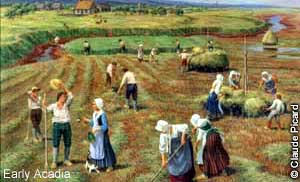
The Cajuns are descendants of Roman Catholic French Canadians whom the British, in the 18th century, drove from the captured French colony of Acadia (now Nova Scotia and adjacent areas)who settled in the fertile bayou lands of southern Louisiana. The Cajuns today form small, compact, generally self-contained communities. Their patois is a combination of archaic French forms with idioms taken from their English, Spanish, German, American Indian, and African American (usually “Creole”) neighbors.
Pres. Teddy Roosevelt was a proponent of the ‘melting pot’ philosophy. The movement was led by people in Louisiana such as Progressive Luther Hall, elected governor in 1912. In July of that year, the legislature passed an act allowing the Department of Education to select all books and curricula for public schools. Starting the next year, English was stressed throughout the curricula, essentially banning French from the schools. In 1916, the state legislature approved Act 27, which required that all children attend public school where English was to be the language. This implicitly meant that the Cajun children that were brought up speaking French in their homes would have to learn English. The events were completed in 1921 when the Louisiana Constitution was changed so that all school proceedings had to be conducted in English. This succession of events led to many Cajuns growing up without learning their ancestral language. Stories abound of Cajun children being punished for speaking French at school.
Most of the parents of children in school for the first few decades of the century had grown up speaking French and still spoke it in the home. Children would learn English at school, but still learned some French in the home. As that English-educated generation grew up and had their own families, the use of French in the home was decreased with each generation. Some Cajun families, especially in more rural areas, continued to pass along the Cajun French language throughout the twentieth century.
